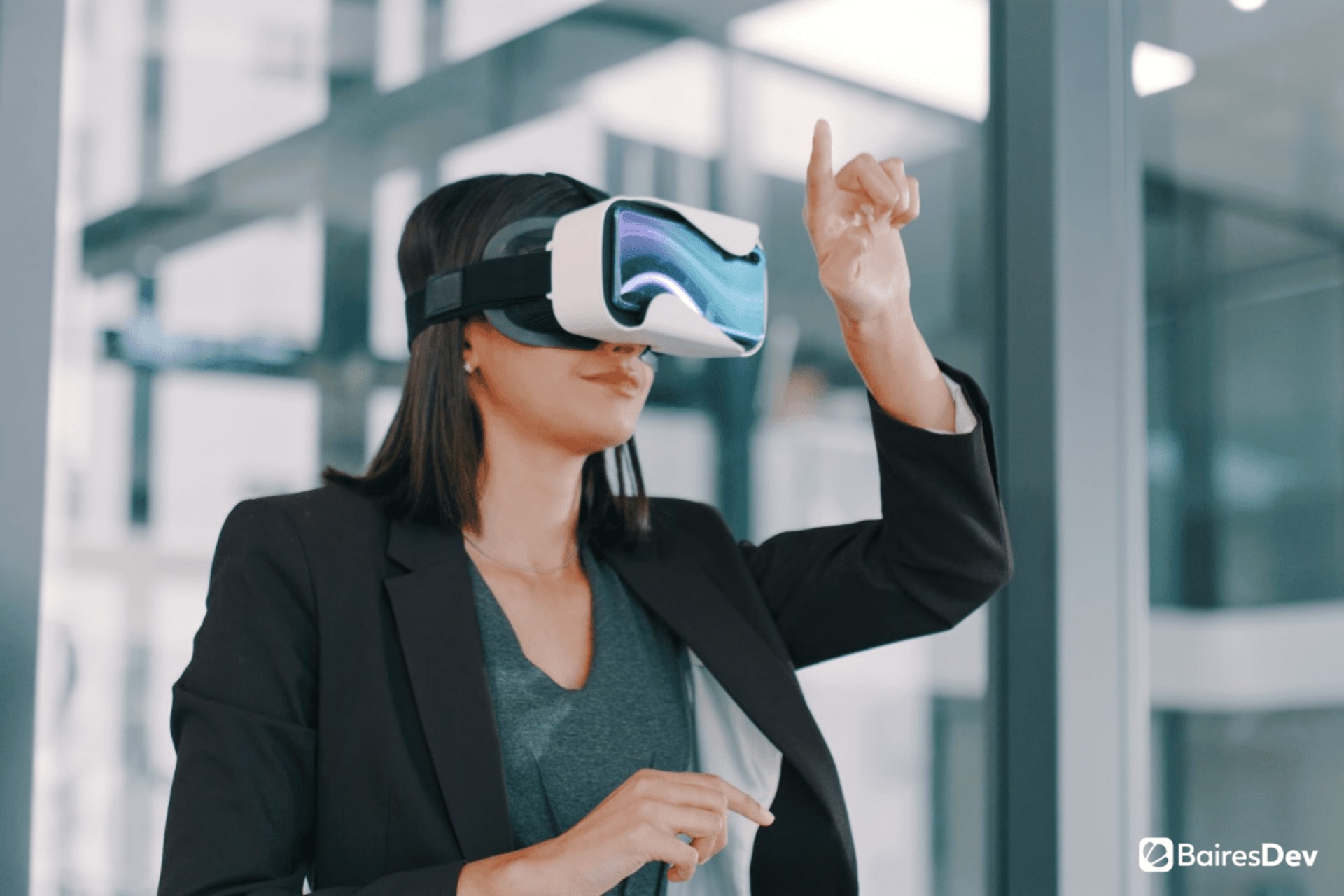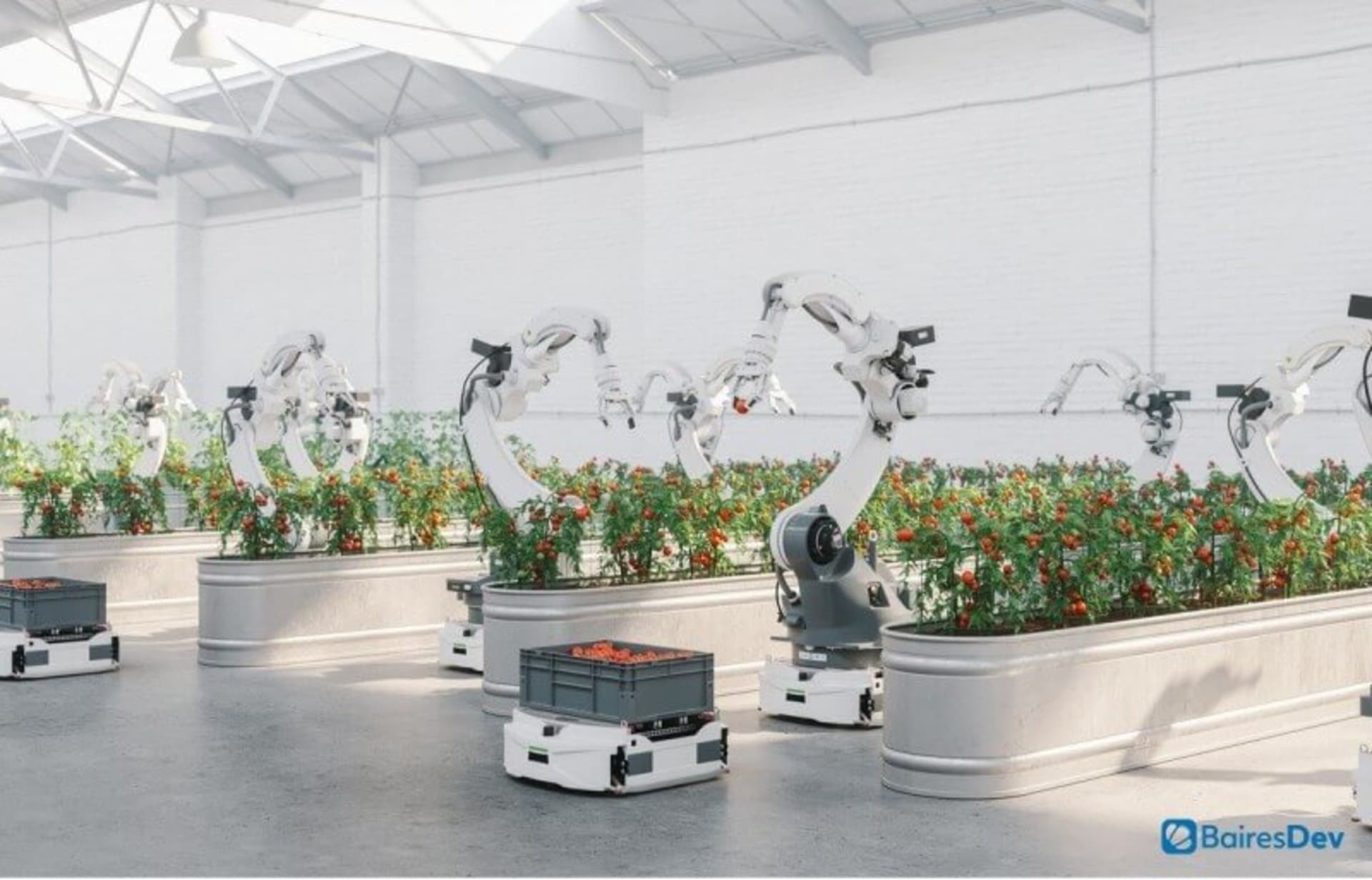When augmented reality (AR) and virtual reality (VR) first entered the picture, it seemed like the wave of the future. Sure, time went by and they didn’t quite make the jump in popularity that we all expected. But that’s about to change. In fact, it feels like AR and VR’s future is brighter than ever.
International Data Corporation (IDC) predicts that spending on these immersive technologies will jump from $12.0 billion in 2020 to $72.8 billion in 2024. And that’s no surprise, given the vast implications of AR and VR. From allowing us to engage with brands and products in unique ways to transport us to different worlds, these innovative technologies are impacting our lives in myriad ways.
As the world continues to change dramatically, AR and VR are proving pivotal players that disrupt a wide range of industries. That begs the question: what will become of them in 2024? And how can these important technologies be used?
Indoor Navigation
We have tools like Google Maps to help direct us from point A to point B outdoors, but what about inside? Thanks to AR and new platforms like Google’s ARCore and Apple’s ARKit, users can receive navigational guidance for large indoor spaces like airports, shopping malls, museums, hospitals, colleges, and many others.
These tools overlay the visual walking directions on top of the actual setting of your mobile device to help you get to your destination with ease.
Greater Collaboration
There are plenty of tools available to help us collaborate with one another virtually, especially since the pandemic hit. Zoom, Slack, and Google Docs are just a few examples. But for those that want to go a step further, AR and VR can offer a transformative experience.
For example, rather than simply presenting a tried-and-true PowerPoint, what if you could deliver a more immersive experience? With the help of AR and AR headsets, you can make your colleagues feel like you’re together in one room. Or, you can enable them to actually “experience” and visualize your ideas.
For example, the platform Arthur Digital enables synchronous, real-time collaboration by creating a fully virtual environment enhanced by VR. Teams can “meet” in a virtual cafeteria or office. This is especially useful during the pandemic when employees are still largely working remotely.
Virtual Events
The COVID-19 pandemic has moved more than a few events online in 2023 and 2024. And while many organizations are relying on Zoom and WebEx to deliver experiences, what if they could do even more? With VR, it’s possible to take events up a notch.
For example, look at basketball. With live games of the table, the NBA took their schedule to the Oculus Quest platform, offering games delivered with the help of VR. Fans can “experience” all the magic of watching the New York Knicks, Miami Heat, and other teams from their homes as if they were actually on the court.
And that’s just one example of the many events that can thrive virtually. Conferences, career fairs, and even parties can be recreated thanks to VR, too.
Enhanced Customer Engagement
Marketing is one of the areas that has been most impacted by AR and VR. These tools enable customers to essentially try out products and services before they make their purchases. This is particularly true during the pandemic when so many people are unwilling or unable to leave their homes and go into public spaces.
One obvious example that has recently gained traction is the real estate market. Some prospective renters and buyers feel uncomfortable interacting with realtors to tour properties. That’s why some realtors are leveraging VR to offer virtual tours, in which customers can see the properties without leaving their current homes.
Many other businesses have released similar platforms to enable customers to try on clothes, browse catalogs, and much more.
Customer Service and Assistance
Sometimes, customer service representatives and IT professionals may have trouble explaining the solution to a problem customers or employees are experiencing without being in the same room. Rather than having to explain the solution verbally or showing static pictures that may not tell the whole story, these professionals can demonstrate how to resolve the issue, entirely remotely and in real-time.
Using the help of AR, a professional can more easily assist the customer or employee. For example, they can draw pictures or write text over an image of a device that requires their support, demonstrating what the customer needs to do to fix their product.
Remote Training
AR has long been used for getting employees up to speed. And with more sophisticated AR headsets and glasses emerging from top brands like Samsung, Oculus, Google, and more, the possibilities for educating and training workers and employees have, in turn, become more sophisticated as well.
This can be especially helpful in industries like manufacturing, where the risk for accidents is high, and employees must gain firsthand experience in how to manipulate intricate equipment. Rather than potentially putting workers in harm’s way, employers can train them on how to use the tools virtually, wearing AR headsets or glasses. Once they have mastered the process, they are ready to use the real tools.
VR can be useful as well. A 2020 PwC study found that people trained with VR were 275% more confident in applying skills learned after training.
5G Support
5G is changing the world. While the rollout is far from complete, many cities all over the globe have embraced ultra-low latency, rocket-fast speeds, and other benefits. So, what does this mean for AR and VR?
For one, the overall experience will be far more powerful. As developers create new products and improve existing ones with 5G in mind, they will be able to deliver a smoother, less hiccupy, and more complex visualization. That’s partly because the data transfer will be extraordinarily quicker, resulting in a clearer image and a less rocky experience for users who might otherwise feel seasick at times when using AR and VR platforms and tools.
Immersion is the name of the game for AR and VR. These pivotal technologies have changed our experiences across niches, industries, and sectors. And in an increasingly digital — and now largely remote — world, they are delivering more powerful opportunities to people everywhere.
This year, AR and VR are poised to reach new heights. These are just some of the implications for these life-changing technologies. What’s next? We’ll find out soon!







